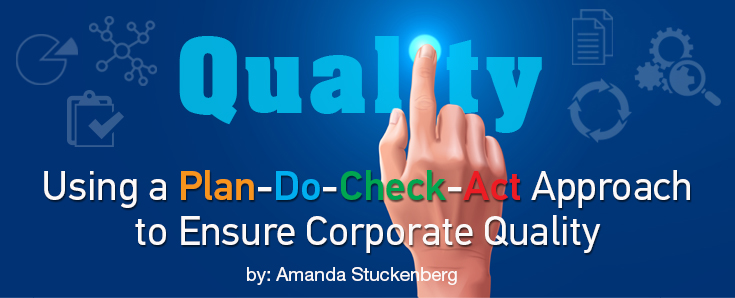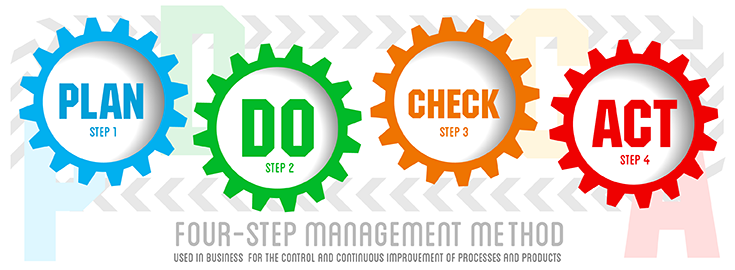Using a Plan-Do-Check-Act Approach to Ensure Corporate Quality

At Stress Engineering Services, Inc. (SES), the concept of quality is embedded in our day-to-day business functions. From our perspective as a service provider, measurement of quality isn’t specifically about a gadget or a widget we produce; rather, it’s about client satisfaction. Ensuring that our clients are satisfied every time we work together. To us, client satisfaction means going beyond the transactional approach of providing answers. Quality is about providing the right answers and in the right time frame, what we like to call “the right stuff on time.”
SES has worked hard to become an industry leader in engineering consulting, testing, analysis, design, fitness-for-service, and product-development services. We pride ourselves on our strong Quality Management System (QMS) and culture that enable us to provide consistent, reliable, and robust services.
Our corporate QMS is based on the ISO 9001 standard, which is aligned with the core values of our business, as they are both centered on customer satisfaction. SES’s Management Team is fully engaged in their support of the QMS implementation and help to ensure integration of the requirements into our business processes. In addition, our system is focused on continual improvement, and we are always fine-tuning our procedures to efficiently and effectively meet the needs of our customers.
As many of you know, the ISO 9001 standard was revised in 2015. Transitioning to the new revision is not a difficult process; however, it involves the diligent commitment of time and resources. SES uses a Plan-Do-Check-Act (PDCA) approach as the foundation of a successful transition.

PLAN: A method for achieving an end; an orderly arrangement of parts of an overall design or objective
- Purchase a copy of the standard [ISO 9001:2015]
- Familiarize yourself with the standard
- Address any questions with your registrar, if applicable
- Obtain training through a credible institution
- Conduct a gap analysis to determine where your system does not currently align with the revised standard
- Create a list of action items to bridge the gaps from the assessment
DO: Bring to pass; carry out
- Implement the action items
- Revise procedures as necessary
- Conduct training as necessary
CHECK: A standard for testing and evaluation
- Assess your performance
- Verify that each action has been implemented
- Analyze data to determine whether your actions are producing the desired results [effectiveness]
- Identify any root causes, as applicable
- Determine corrective actions, as applicable
ACT: The doing of a thing; the process of doing something
- Identify what changes need to be made
- Proceed with another cycle
Keep in mind that this is an iterative process and may require several cycles to address all of the revised standard’s requirements.
A smooth transition is attainable with a good plan, adequate resources, and a strong commitment from top management. As with all systems, focusing on value-added efforts is the key to vitality. Best of luck and congratulations to those who choose to embark on the transition to ISO 9001:2015. This is a powerful industry tool that gives your business processes credibility and provides your clients with peace of mind regarding the quality of work that they can expect!

Amanda Stuckenberg – Quality Manager, Cincinnati Office
Since joining the Stress team six years ago, Amanda has worked in a variety of quality assurance roles. Most notably, she served as internal auditor of SES’s quality system to identify opportunities and propose plans to address opportunities with the aim of continually improving the performance of SES’s quality management system and to satisfy recognized industry standards. Earlier this year, Amanda was promoted to SES’s Quality Manager and has taken on the position with purpose, enthusiasm, and commitment.




Leave a Comment
You must Register or Login to post a comment.